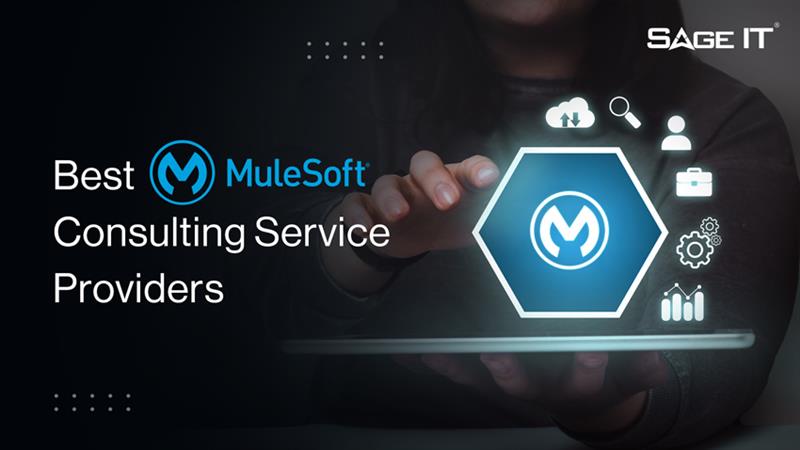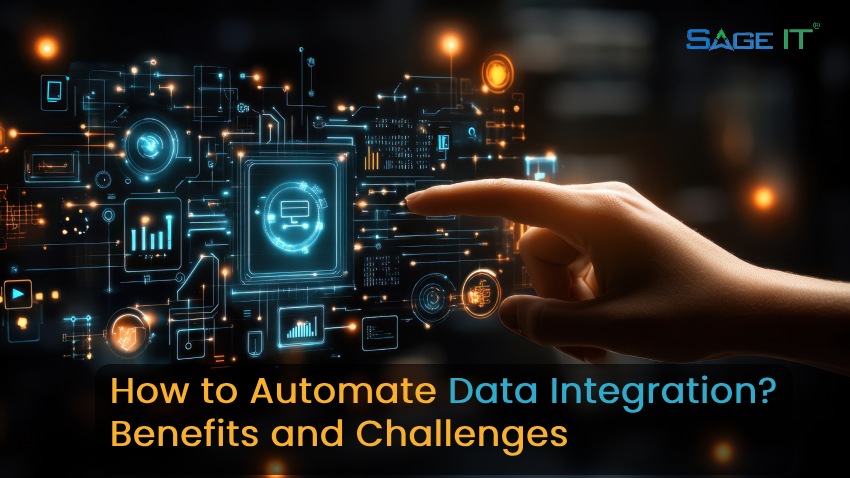The integration of different systems and applications is vital for businesses in today’s digital landscape. As organizations strive for digital transformation, the need for seamless connectivity and data interoperability becomes increasingly important. This is where API-led integration comes into play. API-led integration, or Application Programming Interface led integration, is an architectural style that enables the integration of disparate systems, applications, and data sources through the use of APIs.
Understanding the Core of API-Led Integration
API-led connectivity is at the core of API-led integration. It focuses on building connectivity and interoperability through the use of application programming interfaces (APIs). APIs act as the building blocks of this integration strategy, providing a standardized and structured way to access and exchange data between systems, applications, and services. API-led integration is a key enabler of digital transformation, allowing organizations to unlock the value of their data and create new business opportunities.
Defining API-Led Connectivity
API-led connectivity is a modern approach to integration that breaks down traditional silos and enables seamless connectivity between systems, applications, and data sources. It involves the creation of building blocks called system, process, and experience APIs. System APIs provide connectivity and access to core systems, process APIs orchestrate business processes and logic, and experience APIs focus on delivering a user-friendly experience. API-led connectivity architecture promotes data interoperability, high-level visibility, governance, and functionality across an organization’s digital landscape, driving business disruption through the adoption of new technologies and enabling digital transformation.
How API-Led Integration Works
API-led integration works by leveraging APIs to orchestrate and connect various systems, applications, and data sources. It follows a granular integration strategy, where APIs are designed and developed based on specific business needs and integration requirements. The core systems of an organization, such as databases, legacy systems, and enterprise resource planning (ERP) systems, are connected through system layer APIs. Process layer APIs enable automation and orchestration of business processes, while experience layer APIs focus on providing a user-friendly experience for applications and end-users. This integration approach enables organizations to streamline their processes, improve data accessibility, and enhance system interoperability.
Comparing API-Led Integration with Traditional Integration
API-led integration differs from traditional integration approaches in terms of its architectural style and connectivity strategy. Traditional integration typically relies on point-to-point connectivity, where systems are connected in a one-to-one manner, leading to a complex and tightly coupled integration landscape. In contrast, API-led integration adopts a modular and reusable approach, where APIs act as the building blocks for connectivity, allowing systems, applications, and data sources to be connected in a more scalable and efficient manner. By decoupling systems and leveraging APIs, API-led integration enables organizations to achieve greater agility, flexibility, and reuse of core systems and business logic.
Key Differences between API-Led and Traditional Integration
API-led integration and traditional integration differ in several key aspects. One of the main differences is the concept of layers of APIs. API-led integration architecture consists of system, process, and experience layer APIs, which provide connectivity and functionality across different levels of an organization’s digital landscape. This layer-based approach enables agility, scalability, and reuse of core systems and business processes. In contrast, traditional integration typically focuses on connecting underlying systems directly, leading to complex and tightly coupled integration logic.
Another key difference is in the underlying connectivity strategy. Traditional integration often relies on custom code, point-to-point integration, and legacy middleware, which can be time-consuming, costly, and difficult to maintain. API-led integration, on the other hand, adopts a more standardized, modular, and scalable connectivity strategy through the use of APIs. APIs enable loose coupling, reusability, and interoperability between systems, applications, and data sources, promoting agility, scalability, and ease of integration.
Why API-Led Integration is a Superior Approach
API-led integration offers a unique architectural style comprising process layer and experience APIs. It effectively caters to business demands and system layer connectivity, even adapting to new technologies. This approach excels in data integration and accessibility, enriching business processes and data accessibility. Moreover, it outperforms traditional integration with next-level capabilities, making it the superior choice.
The Architecture of API-Led Connectivity
The Architecture of API-Led Connectivity involves the seamless integration of application programming interfaces (APIs) across different layers of APIs, creating an architectural style that takes connectivity to the next level. This approach allows for efficient data flow between various interfaces, such as Salesforce, IoT, AWS, and healthcare systems. Leading platforms like MuleSoft enable this level of integration, leveraging AI to power workflows and streamline processes. JSON and Workato play pivotal roles in this innovative architectural design.
An Overview of System APIs
Enabling connectivity, access, and orchestration of core systems, System APIs are vital for business logic, automation, and data integration. They provide accessibility to underlying systems, driving business processes and integration capabilities. Additionally, they facilitate new technologies, data accessibility, and system layer connectivity, taking businesses to the next level of architectural style and interoperability.
Understanding Process APIs
Process APIs center on automating, orchestrating, and implementing business logic. They facilitate the connectivity, accessibility, and integration of business processes using conventional and contemporary APIs, alongside machine learning. By promoting disruption, agility, and interoperability within core systems, Process APIs cater to business requirements, system layer connectivity, and accessibility, taking integration to the next level.
The Role of Experience APIs
Experience APIs prioritize user experience, application access, and visibility, driving disruption, agility, and interoperability. They ensure high-level visibility, governance, and functionality while addressing data accessibility and integration strategy across the experience layer. Furthermore, these APIs enrich business processes, integration capabilities, and interoperability at the next level, aligning with modern architectural styles and interfaces.
Unleashing the Power of API-Led Connectivity
Unleash the true potential of API-led connectivity by leveraging layers of APIs to enhance your architectural style. Take your integration to the next level with interfaces like Salesforce, IoT, AWS, and healthcare. Mulesoft, AI, and JSON play a pivotal role in this blog as you explore the dynamic world of API-led integration.
Advantages of API-Led Integration
Promoting interoperability and agility, API-led integration breaks down data silos, enabling accessibility. APIs facilitate automation, enhancing business processes, while also enhancing visibility and governance. This architectural style promotes the reuse and accessibility of IT assets, taking connectivity to the next level.
Real-World Applications of API-Led Connectivity
Enabling access and functionality across diverse sources, API-led integration empowers applications. The architecture fosters connectivity for traditional and advanced systems, facilitating data integration and disrupting legacy systems. This approach allows integration with core systems and business logic, enhancing connectivity across system, process, and experience layers. This architectural style paves the way for next-level connectivity, impacting various industries including Salesforce, IoT, AWS, healthcare, and AI.
Implementing API-Led Connectivity: Best Practices and Challenges
Implementing API-Led Connectivity: Best Practices and Challenges
To ensure successful implementation, it’s crucial to consider layers of APIs, architectural style, and next-level interfaces. The challenges may include integrating Salesforce, IoT, AWS, and healthcare systems. Leveraging MuleSoft, AI, and Workato can streamline the process. Additionally, handling data formats such as JSON efficiently is essential for seamless integration.
Steps to Successful API-Led Integration Implementation
To achieve successful API-led integration, a comprehensive application of building blocks for led connectivity is essential. This involves creating experience layer APIs for user experience and integrating with system, process, and experience APIs. An integration strategy for the right API granularity and a strategy for led connectivity of new APIs are also crucial. These steps will elevate your integration to the next level.
Common Challenges and Solutions in API-Led Integration
Facing obstacles with data accessibility and connectivity to data silos, API-led integration encounters challenges. Integration with new technologies and REST APIs poses architectural challenges. Traditional connectivity and interoperability issues require solutions. Implementing API-led integration necessitates a strategy for new API connectivity architecture. Governance and visibility of experience layer APIs are crucial for successful API-led integration.
API-Led Integration and Its Impact on Business Agility
Maximizing business agility, API-led integration streamlines connectivity through layers of APIs, creating an architectural style that takes businesses to the next level. With interfaces like Salesforce, IoT, AWS, and healthcare systems seamlessly integrated using MuleSoft, AI-driven data insights are at your fingertips. Harnessing the power of JSON and Workato, API-led integration propels businesses forward, optimizing workflows and driving growth.
How API-Led Connectivity Promotes Business Scalability
Promoting business scalability, API-led connectivity enables agility with system, process, and experience APIs. It fosters innovation, demands governance, and enhances transformation, impacting digital strategy. The architectural style supports new technologies, demanding visibility of experience layer APIs for next-level integration. This promotes digital transformation and automation, shaping business strategies for the future.
API-Led Integration as a Catalyst for Innovation
Driving digital transformation and automation, API-led integration profoundly impacts business strategy. It fosters agility through system, process, and experience APIs, enabling seamless integration capabilities. The architectural style of API-led connectivity enhances business innovation and drives disruption by integrating with next-level systems. Moreover, it ensures business scalability, fostering innovation and transformation in new technologies.
How Can API-Led Integration Transform Your Business Strategy?
API-led integration has the power to transform your business strategy by enabling the integration of new technologies and REST APIs. This connectivity architecture promotes innovation, drives disruption, enhances scalability, and improves agility. Break down data silos and embrace API-led integration for a more efficient and successful business strategy.
Conclusion
In conclusion, API-led integration provides a scalable and efficient approach to connecting systems, processes, and experiences. By adopting this methodology, organizations can streamline their integration efforts, enhance business agility, and foster innovation. API-led integration offers several advantages over traditional integration methods, such as improved reusability, flexibility, and ease of maintenance. It allows businesses to unlock the full potential of their APIs and leverage them in real-world applications. However, implementing API-led connectivity requires careful planning and consideration of common challenges. By following best practices and utilizing the right tools, organizations can successfully implement API-led integration and drive their digital transformation initiatives. Embracing API-led connectivity can truly transform your business strategy and position your organization for success in the digital age.
If you have any further questions or need assistance, feel free to reach out to us at marketing@sageitinc.com










